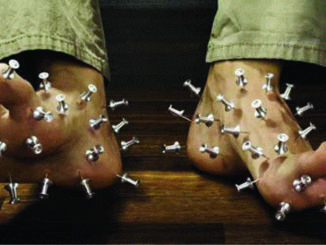
Pregnancy care begins for the expectant mother from the moment of fertilization and does not stop until that child has been delivered safe and sound. How she treats her body during this time is crucial for a healthy baby and increases the possibility for a good labor and delivery. Crucial elements for a healthy mother and baby are pre-natal vitamins, proper diet, exercise, stretching, and reducing physical, chemical, and emotional stressors. In this article I want to discuss why chiropractic care is also an essential ingredient during pregnancy for the mother and the baby.
For the mother, when you add the multiple components of weight gain, shifting of center of gravity forward, and increasing laxity of the ligaments, it creates the perfect opportunity for instability of the spine and pelvis. This instability often leads to muscular soreness and spinal or pelvic misalignments. Chiropractors call these misalignments, subluxations. Subluxations left uncorrected, over time, can lead to pain, tissue damage, structural spinal decay, and nerve irritation.
The fourth edition of Varney’s Midwifery states, “The potential for damage in pregnancy and the postpartum period to a woman’s neuro-musculoskeletal structure is great. Shifts in the center of gravity forward and slightly up destabilize her posture and realign the carriage of weights and forces through her joints, predisposing nerves, muscles, bones, and connective tissues to damage. Increased levels of relaxin and elastin further aggravate this situation.” 1
For the baby, the mother’s uterus is home for approximately nine months. When the mother has spinal or pelvic misalignments this can lead to intrauterine constraint. To understand this, we must first understand the mother’s anatomy and how it relates to the positioning of the baby’s womb.
The mother’s pelvis has some key ligaments that attach to the uterus. If the mother’s pelvis is balanced and symmetrically aligned, it will allow for a symmetrically supported uterus and optimum room for the baby to grow and develop. Alternatively, if the mother’s pelvis, especially her sacrum (triangular bone at the base of the spine), is misaligned it will cause uneven pulling on the mother’s supporting ligaments. The resulting torsion of the uterus leads to intrauterine constraint and limits the potential room for the baby to grow, develop, and get in the proper birthing position. 2
Having difficult labor (known as dystocia) is another situation every expectant mother wants to avoid. Some studies have demonstrated that as many as one in five mothers during childbirth experience difficult labor. Pelvic imbalance is a common cause for dystocia. Unfortunately, dystocia often changes what would be a natural uncomplicated birth into series of medical procedures, medical interventions, and assisted delivery of the baby. These could include giving the mother oxytocin (used commonly to stimulate contraction of the muscles of the uterus to speed up the birthing process), epidurals, episiotomies, forceps or vacuum extraction, or Caesarean section.
Studies demonstrate that chiropractic care may result in an easier pregnancy and easier births. One study showed women who received chiropractic care during their first pregnancy had a 24% reduction in labor times while those receiving care during their second or third child reported 39% reduction in labor times. 84% of women in another study reported relief of back pain during pregnancy with chiropractic care. Another study showed there was a 50% reduction in the need for analgesics (pain relievers) in pregnant patients receiving chiropractic adjustments.3
As pregnancy progresses into the third trimester, the chiropractic techniques used by your chiropractor may change or be modified for the comfort of the mother. One specific technique used by chiropractors to analyze sacral misalignments commonly associated with intrauterine constraint is called the Webster Technique. The Webster Technique is defined as “a specific chiropractic analysis and adjustment that reduces interference to the nerve system, facilitates balance in the pelvic and abdominal muscles and ligaments, which in turn reduces constraint to the woman’s uterus allowing the baby to get into the best possible position for birth.”4
Chiropractic care can be a huge benefit for both the mother and the unborn child. When women receive chiropractic care through their pregnancies it results in less stress on the mother’s spine, sacro-iliac joints, and pelvis. This will significantly reduce the likelihood of back labor and help ensure a quicker, easier delivery.
To give your pregnancy and your baby the best possible beginning of life, choose to get regular chiropractic care. You and your baby deserve the best opportunity for a more comfortable pregnancy and a safer, easier birth!
-by Dr. Brandon Crouch
About the Author: Dr. Brandon Crouch is a Chiropractor with Crouch Family Chiropractic. He is an advocate for being proactive when it comes to your health and encourages people to make healthy informed decisions. For more information you can go online at: www.crouchfamilychiro.com.
Sources:
1. Cowlin A. Women and Exercise. In Varney H, Kriebs J, Gegor C, editors. Varney’s Midwifery. Boston, Toronto, London, Singapore: Jones and Bartlett; 2004. p. 199
2. Ohm, Jeanne, D.C., Chiropractic Care for an Easier Pregnancy and Safer Birth, Pathways to Family Wellness magazine, Issue #24, Dec 09
3. Rosenberg, Stacy, An Expecting Parent’s Guide to Chiropractic, Pathways to Family Wellness magazine, Issue #20, Dec 08
4. The Webster Technique Defined, International Chiropractic Pediatric Assoc., www.icpa4kids.com/webster_technique.htm






